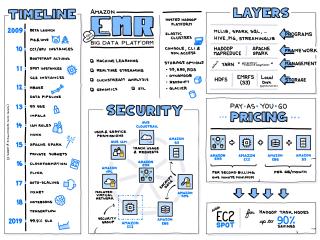
Amazon Kinesis Data Streams is a robust service built on the AWS infrastructure that facilitates the real-time collection, processing, and analysis of streaming data. Tailored for professional developers and IT administrators, it is designed to handle massive volumes of data with efficiency and reliability. In this article, we delve into the technical aspects of Kinesis Data Streams, exploring its use cases, pricing, scalability, availability, security features, and how it stacks up against competing services from other cloud providers.
Use Cases
Kinesis Data Streams is versatile, supporting a wide range of use cases where real-time data processing is critical. Popular applications include real-time analytics, where data is processed instantly to generate insights. An example is analyzing clickstream data from websites to monitor user interactions and behavioral patterns. Another use case is in the Internet of Things (IoT) applications, where Kinesis can ingest data from millions of devices and sensors, enabling immediate processing and decision-making. Financial services often leverage Kinesis for transaction processing and fraud detection, while developers use it for building streaming data pipelines to ingest and transform data before storing it in Amazon S3 or Amazon Redshift.
Pricing
The pricing model for Kinesis Data Streams is primarily based on two dimensions: the number of shards and the data volume ingested. Each shard can ingest data at a rate of 1 MB per second and up to 1,000 records per second. Charges are incurred per shard-hour, and additional fees apply for the data volume you have ingested and retrieved from the stream. This two-fold pricing model offers flexibility and scalability, allowing you to align costs with your specific usage patterns. AWS provides a detailed pricing guide to help you calculate costs based on your forecasted need.
Scalability
Scalability is a cornerstone of Kinesis Data Streams. Users can dynamically adjust the number of shards in a stream to accommodate workload changes. This enables processing from kilobytes to terabytes of data per hour easily. By modifying the shard count, Kinesis efficiently scales up during peak times and scales back down when demand is lower, optimizing resource use and costs. The throughput scales linearly with the number of shards added, offering predictability in resource allocation.
Availability
Amazon Kinesis Data Streams ensures high availability with built-in infrastructure redundancies. AWS replicates shards across three availability zones in a region to maintain data durability and safeguard against failure. The service provides automatic failover to healthy nodes within zones, ensuring that there is no single point of failure. This robust architecture, backed by the AWS Global Cloud Infrastructure, delivers a reliable service for critical data processing tasks.
Security
Security in Kinesis Data Streams is prioritized at multiple levels. AWS provides encryption at rest using AWS KMS, allowing customers to secure data using AWS-managed keys or customer-managed keys. Data in transit can be encrypted using TLS to protect against interception and tampering. Identity and Access Management (IAM) policies grant fine-grained access control to Kinesis resources, ensuring that only authorized users and applications can access the data. Integration with Amazon CloudWatch enables monitoring and alarming, enhancing operational security further.
Competition
As business requirements for real-time data streaming grow, several cloud providers offer similar services to Amazon Kinesis Data Streams, each with its unique features and capabilities.
Google Cloud offers Cloud Pub/Sub, a messaging service designed for ingesting event streams. It provides a flexible and reliable way to integrate with Google Cloud services for analytics and machine learning.
Microsoft Azure provides Azure Event Hubs, a big data streaming platform and event ingestion service. It can process millions of events per second with native integration into the Azure ecosystem.
Alibaba Cloud features Message Queue for Apache Kafka, which is based on Apache Kafka and offers high throughput, low-latency, and scalability.
Each of these services presents a compelling offering depending on the existing infrastructure and strategic cloud platform alignment of an organization.
 Amazon Timestream
Amazon Timestream
 AWS Data Exchange
AWS Data Exchange
 AWS Lake Formation
AWS Lake Formation
 Amazon EMR
Amazon EMR